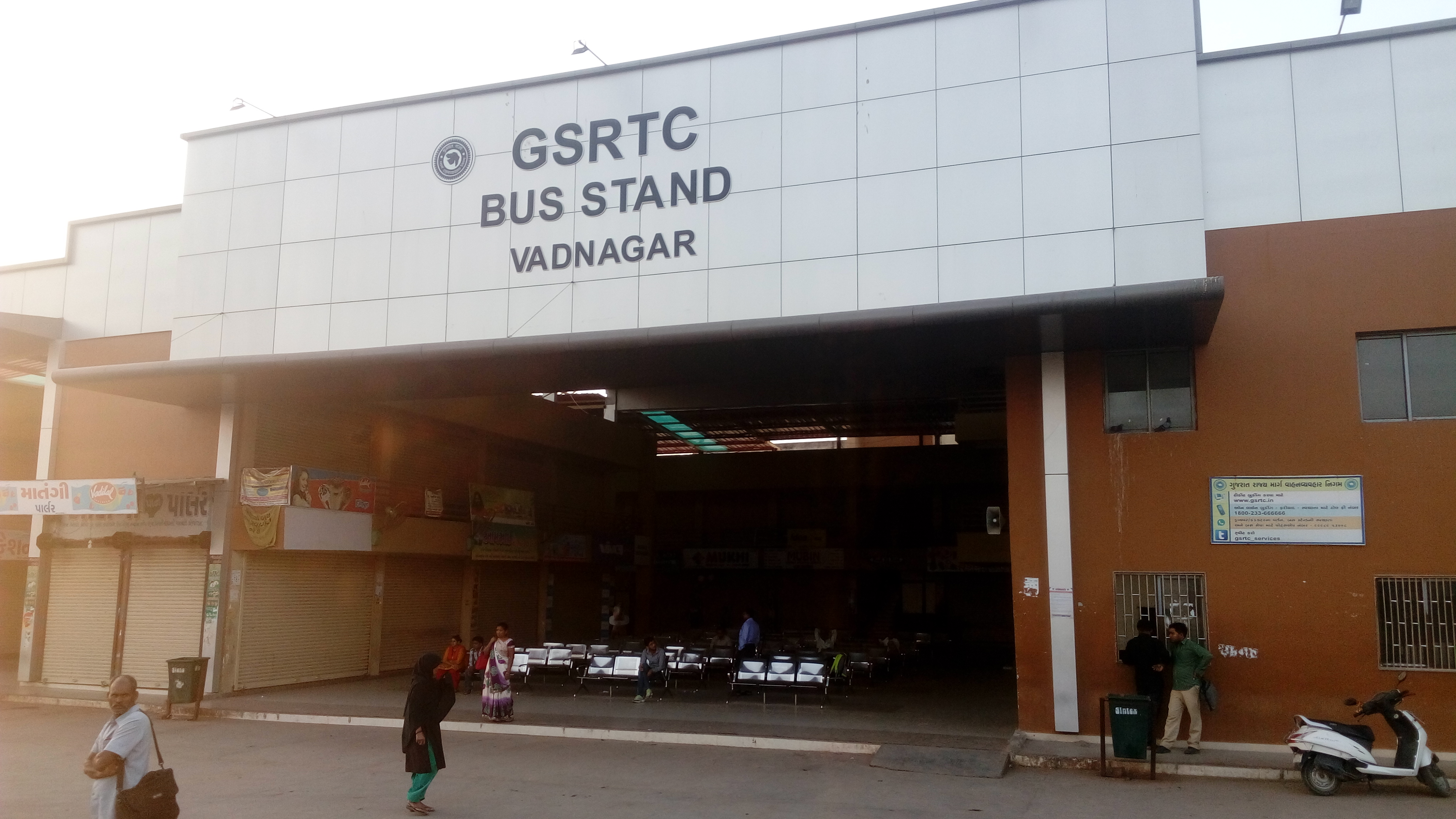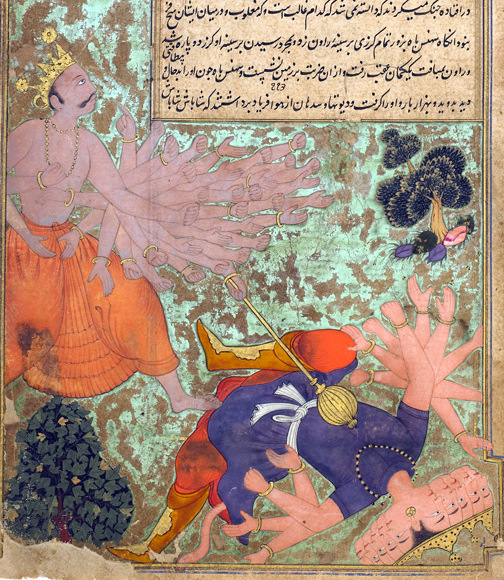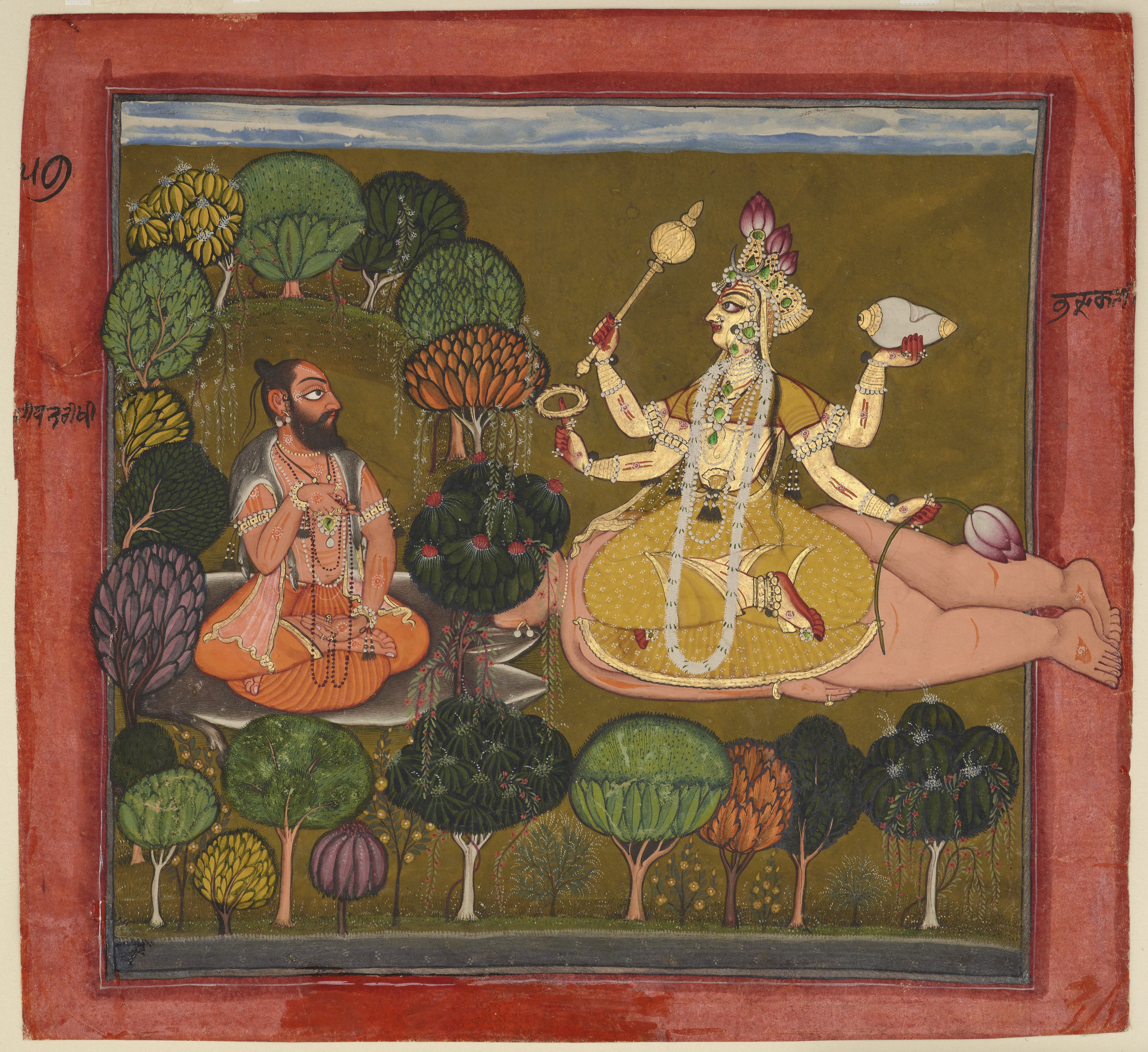|
Anarta
Anarta ( sa, आनर्त, ) was an ancient Indian region which corresponded to the present-day North Saurashtra to North Gujarat regions in Gujarat state of India. Several ancient inscriptions and literary sources mention a town called Anartapura or Anandapura, which is identified as the area in and around the present-day Vadnagar. Anarta in the Puranic literature According to the Puranic accounts, this region was ruled by the Sharyata dynasty rulers, who claimed their descent from Sharyati, a son of Vaivasvata Manu. The kingdom was named after Anarta, the son of Sharyati. The capital of this kingdom was Kushasthali (the ancient name of Dwaraka). The last ruler of this dynasty was Kakudmi. After him, it was occupied by the Punyajana Rakshasas. Later, the Yadavas migrated to this region under the leadership of Lord Krishna. Sage Chyavana was also connected with Sharyati and Anarta. He married Sukanya, daughter of Sharyati and sacrificed for him. His descendants were asso ... [...More Info...] [...Related Items...] OR: [Wikipedia] [Google] [Baidu] |
Anarta
Anarta ( sa, आनर्त, ) was an ancient Indian region which corresponded to the present-day North Saurashtra to North Gujarat regions in Gujarat state of India. Several ancient inscriptions and literary sources mention a town called Anartapura or Anandapura, which is identified as the area in and around the present-day Vadnagar. Anarta in the Puranic literature According to the Puranic accounts, this region was ruled by the Sharyata dynasty rulers, who claimed their descent from Sharyati, a son of Vaivasvata Manu. The kingdom was named after Anarta, the son of Sharyati. The capital of this kingdom was Kushasthali (the ancient name of Dwaraka). The last ruler of this dynasty was Kakudmi. After him, it was occupied by the Punyajana Rakshasas. Later, the Yadavas migrated to this region under the leadership of Lord Krishna. Sage Chyavana was also connected with Sharyati and Anarta. He married Sukanya, daughter of Sharyati and sacrificed for him. His descendants were asso ... [...More Info...] [...Related Items...] OR: [Wikipedia] [Google] [Baidu] |
Vadnagar
Vadnagar is a town and municipality in the Mehsana district of the state of Gujarat in India. It just about 35 km from Mehsana city. Its ancient name was Anartapura, and was also known as Anandapura. It was a Buddhist location visited by Xuanzang in 640 C.E. Historian and archaeologist Alexander Cunningham has identified Anandapura with the town of Vadnagar. Vadnagar is also the birthplace of the current Prime Minister of India Narendra Modi. History Several ancient inscriptions and literary sources mention a town called Anartapura or Anandapura, identified as the area in and around the present-day Vadnagar. The epic tale Mahabharata mentions the Anarta Kingdom in the northern part of present-day Gujarat. The oldest Puranic legend about Gujarat is about a king named Anartha. The town is mentioned in the Tirtha Mahatmya section of Nagara Khanda of Skanda Purana by the name of Chamatkarapura. The Junagadh rock inscription (dating from 150 C.E.) of Western Kshatrapa King Ru ... [...More Info...] [...Related Items...] OR: [Wikipedia] [Google] [Baidu] |
Haihayas
The Heheya Kingdom (also known as Haihaya, Haiheya, Heiheya _sa.html" ;"title="nowiki/> sa">हैहय was a kingdom ruled by the Yadava people, who claimed to be descended from Yadu, a legendary king of Chandravamsha lineage. One of the most well known Haihaya rulers was Kartavirya Arjuna. It is believed that the Kingdom was involved with a number of conflicts with neighboring kingdoms, and it is believed that it was ultimately defeated by the Bhargava leader Parashurama. The capital of the Heheya Kingdom was Mahishmati, located on the banks of the Narmada River in present-day Madhya Pradesh. Haihaya clans The Haihayas were an ancient confederacy of five ''gana''s (clans), who claimed their common ancestry from Yadu. According to the ''Harivamsha Purana'' (34.1898), Haihaya was the great-grandson of Yadu and grandson of Sahasrajit.Pargiter, F.E. (1972) 922 ''Ancient Indian Historical Tradition'', Delhi: Motilal Banarsidass, p.87. In the ''Vishnu Purana'' (IV.11), all t ... [...More Info...] [...Related Items...] OR: [Wikipedia] [Google] [Baidu] |
Gujarat
Gujarat (, ) is a state along the western coast of India. Its coastline of about is the longest in the country, most of which lies on the Kathiawar peninsula. Gujarat is the fifth-largest Indian state by area, covering some ; and the ninth-most populous state, with a population of 60.4 million. It is bordered by Rajasthan to the northeast, Dadra and Nagar Haveli and Daman and Diu to the south, Maharashtra to the southeast, Madhya Pradesh to the east, and the Arabian Sea and the Pakistani province of Sindh to the west. Gujarat's capital city is Gandhinagar, while its largest city is Ahmedabad. The Gujaratis are indigenous to the state and their language, Gujarati, is the state's official language. The state encompasses 23 sites of the ancient Indus Valley civilisation (more than any other state). The most important sites are Lothal (the world's first dry dock), Dholavira (the fifth largest site), and Gola Dhoro (where 5 uncommon seals were found). Lothal i ... [...More Info...] [...Related Items...] OR: [Wikipedia] [Google] [Baidu] |
Rudradaman I
Rudradāman I (r. 130–150) was a Śaka ruler from the Western Kshatrapas dynasty. He was the grandson of the king Caṣṭana. Rudradāman I was instrumental in the decline of the Sātavāhana Empire. Rudradāman I took up the title of '' Maha-kshtrapa'' ("Great Satrap"), after he became the king and then strengthened his kingdom. Reign As a result of his victories, Rudradāman regained all the former territories previously held by Nahapana, except for the southern territory of Poona and Nasik. The indigenous Nagas also were aggressive toward Śaka kshatrapas. Sātavāhana dominions were limited to their original base in the Deccan and eastern central India around Amaravati: War with the Yaudheyas Rudradāman conquered the Yaudheya tribes in present day Haryana, as described in the Girnar rock inscription of Rudradaman. Rudradaman refers to the Yaudheyas as a militant republic of kshatriyas that confronted him as opposed to submitting: However, the Yaudheyas soon r ... [...More Info...] [...Related Items...] OR: [Wikipedia] [Google] [Baidu] |
Dvārakā
Dvārakā, also known as ''Dvāravatī'' (Sanskrit द्वारका "the gated ity, possibly meaning having many gates, or alternatively having one or several very grand gates), is a sacred historic city in the sacred literature of Hinduism, Jainism,See Jerome H. Bauer "Hero of Wonders, Hero in Deeds"Vasudeva Krishna in Jaina Cosmohistory in and Buddhism. It is also alternatively spelled as Dvarika. The name Dvaraka is said to have been given to the place by Krishna, a major deity in Hinduism. Dvaraka is one of the Sapta Puri (seven sacred cities) of Hinduism. In the ''Mahabharata'', it was a city located in what is now Dwarka, formerly called Kushasthali, the fort of which had to be repaired by the Yadavas. In this epic, the city is described as a capital of the Anarta Kingdom. According to the ''Harivamsa'' the city was located in the region of the Sindhu Kingdom. In the Hindu epics and the Puranas, Dvaraka is called Dvaravati and is one of seven Tirtha (pilgrima ... [...More Info...] [...Related Items...] OR: [Wikipedia] [Google] [Baidu] |
Chyavana
Chyavana () was a sage (rishi) in Hinduism. He was a son of Bhrigu, also known as Bhrigu Varuni in the Upanishads, and is known for his rejuvenation through a special herbal paste or tonic known as '' chyavanaprasham'', which was prepared by the Ashvins. According to the ''Mahabharata'', he was powerful enough to oppose the celestial thunderbolt (''vajra'') of Indra, and was responsible for the Ashvins getting their share of the sacrificial offerings. He created an asura, Mada, to achieve it. Chyavana (with a different spelling: च्यवान Cyavāna) is also mentioned in the ''Rigveda'', where he is described as an aged and feeble person whose youth and strength was restored by the twin Aśvins (RV VII.68:6). According to Rigveda X.61:1-3, Cyavāna is a weak opponent of Tūrvayāṇa, an Indra worshipper Paktha king, as the latter was closer to the Ashvins. According to one tradition, he married Vaivasvata Manu's daughter Arushi. Their son was Aurva. According to anothe ... [...More Info...] [...Related Items...] OR: [Wikipedia] [Google] [Baidu] |
Parthia
Parthia ( peo, 𐎱𐎼𐎰𐎺 ''Parθava''; xpr, 𐭐𐭓𐭕𐭅 ''Parθaw''; pal, 𐭯𐭫𐭮𐭥𐭡𐭥 ''Pahlaw'') is a historical region located in northeastern Greater Iran. It was conquered and subjugated by the empire of the Medes during the 7th century BC, was incorporated into the subsequent Achaemenid Empire under Cyrus the Great in the 6th century BC, and formed part of the Hellenistic Seleucid Empire following the 4th-century-BC conquests of Alexander the Great. The region later served as the political and cultural base of the Eastern Iranian Parni people and Arsacid dynasty, rulers of the Parthian Empire (247 BC – 224 AD). The Sasanian Empire, the last state of pre-Islamic Iran, also held the region and maintained the seven Parthian clans as part of their feudal aristocracy. Name The name "Parthia" is a continuation from Latin ', from Old Persian ', which was the Parthian language self-designator signifying "of the Parthians" who were an Iranian ... [...More Info...] [...Related Items...] OR: [Wikipedia] [Google] [Baidu] |
Saka
The Saka ( Old Persian: ; Kharoṣṭhī: ; Ancient Egyptian: , ; , old , mod. , ), Shaka (Sanskrit ( Brāhmī): , , ; Sanskrit (Devanāgarī): , ), or Sacae (Ancient Greek: ; Latin: ) were a group of nomadic Iranian peoples who historically inhabited the northern and eastern Eurasian Steppe and the Tarim Basin. "Modern scholars have mostly used the name Saka to refer specifically to Iranians of the Eastern Steppe and Tarim Basin" "In modern scholarship the name 'Sakas' is reserved for the ancient tribes of northern and eastern Central Asia and Eastern Turkestan to distinguish them from the related Massagetae of the Aral region and the Scythians of the Pontic steppes. These tribes spoke Iranian languages, and their chief occupation was nomadic pastoralism." The Sakas were closely related to the European Scythians, and both groups formed part of the wider Scythian cultures and ultimately derived from the earlier Andronovo culture, and the Saka language formed part of ... [...More Info...] [...Related Items...] OR: [Wikipedia] [Google] [Baidu] |
Sukanya
Sukanya ( sa, सुकन्या, lit=wonderful virgin, translit=Sukanyā) is a princess In Hindu mythology. She is the daughter of Sharyati, the son of Vaivasvata Manu, and the wife of the sage Chyavana. Legend Marriage According to the narrative found in the Vana Parva of the Mahabharata, Sage Chyavana was so absorbed in practising austerities on the side of a lake that termites built up their mound all over his body and only his eyes were left. Once, Sharyati, along with his army and household, came to visit the place. Sukanya, daughter of King Sharyati, seeing only two bright eyes in what seemed to be an anthill, poked them with a stick. Chyavana felt excessive pain and became furious. He obstructed the excretory functions of the men of Sharyati's army. He was propitiated only after the king gave him his daughter, Sukanya, in marriage. Deduction Once, the Ashvins visited the hermitage of Chyavana. They saw the beautiful Sukanya while she was bathing. They tried t ... [...More Info...] [...Related Items...] OR: [Wikipedia] [Google] [Baidu] |
Yaduvanshi
Yadu () is the founder of the Yadu dynasty in Hinduism. He is described to be the eldest son of King Yayati, and his queen, Devayani. Legend According to a narrative found in the Mahabharata, and the Vishnu Purana, Yadu refused to exchange his years of youth with his father, Yayati, when the latter was cursed with senility by his father-in-law, Shukra. Thus, he was cursed by Yayati to have his progeny disinherited of the dominion. Due to this proclamation, Yadu was replaced by his step-brother, Puru, as the heir to the throne of the Chandravamsha dynasty. Yadu founded his own cadet branch of the dynasty, called the Yaduvamsha. Descendants The Agni Purana states that Yadu's lineage was continued by his eldest son, Sahasrajit. Sahasrajit had three sons: Haihaya, Reṇuhaya, and Haya. A historical dynasty called the Haihayas claimed descent from Haihaya. Several castes and communities in modern India, such as Ahir or Yadav, Chudasama, claim descent from Yadu. See also * ... [...More Info...] [...Related Items...] OR: [Wikipedia] [Google] [Baidu] |
Lord Krishna
Krishna (; sa, कृष्ण ) is a major deity in Hinduism. He is worshipped as the eighth avatar of Vishnu and also as the Supreme god in his own right. He is the god of protection, compassion, tenderness, and love; and is one of the most popular and widely revered among Indian divinities. Krishna's birthday is celebrated every year by Hindus on Krishna Janmashtami according to the lunisolar Hindu calendar, which falls in late August or early September of the Gregorian calendar. The anecdotes and narratives of Krishna's life are generally titled as ''Krishna Leela''. He is a central character in the ''Mahabharata'', the ''Bhagavata Purana'', the ''Brahma Vaivarta Purana,'' and the ''Bhagavad Gita'', and is mentioned in many Hindu philosophical, theological, and mythological texts. They portray him in various perspectives: as a god-child, a prankster, a model lover, a divine hero, and the universal supreme being. Quote: "Krsna's various appearances as a divine her ... [...More Info...] [...Related Items...] OR: [Wikipedia] [Google] [Baidu] |







